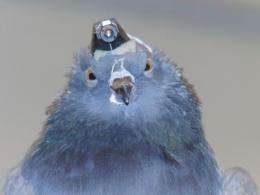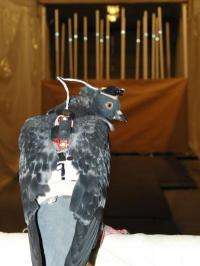Auto-pilots need a birds-eye view

New research on how birds can fly so quickly and accurately through dense forests may lead to new developments in robotics and auto-pilots.
Scientists from Harvard University trained pigeons to fly through an artificial forest with a tiny camera attached to their heads, literally giving a birds-eye view. "Attaching the camera to the bird as well as filming them from either side means we can reconstruct both what the bird sees and how it moves," says Dr. Huai-Ti Lin, a lead researcher for this work who has special insight into flying as he is a remote control airplane pilot himself.
The methods pigeons use to navigate through difficult environments could be used as a model for auto-pilot technology. Pigeons, with >300 degree panoramic vision, are well suited to this task because this wrap-round vision allows them to assess obstacles on either side. They can also stabilise their vision and switch rapidly between views using what is called a "head saccade", a small rapid movement of the head.

This research is being presented at the Society for Experimental Biology annual conference in Glasgow on the 1st of July, 2011.
The researchers also showed that the birds have other skills that would be important for auto-piloted machines, for example they tend to choose the straightest routes. "This is a very efficient way of getting through the forest, because the birds have to do less turns and therefore use less energy but also because they reach the other side quicker," says Dr Lin. "Another interesting finding is that pigeons seems to exit the forest heading in exactly the same direction as when they entered, in spite of all the twist and turns they made in the forest."
When using a robot or an unmanned air-craft it would be invaluable to simply provide it with the coordinates of the destination without having to give it detailed information of all the obstacles it might meet on the way. "If we could develop the technology to follow the same methods as birds we could let the robot get on with it without giving it any more input," says Dr. Lin
Provided by Society for Experimental Biology


















